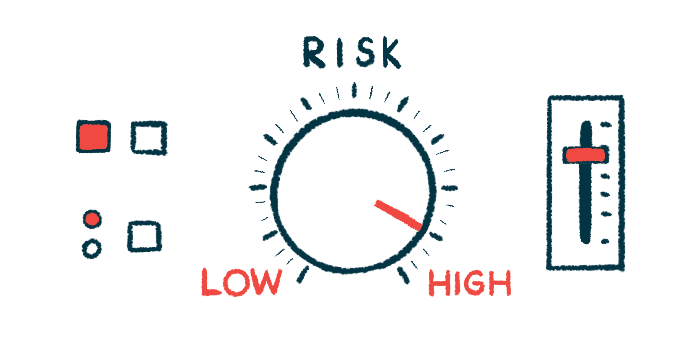Worsening breathing is key risk for people with SSc-ILD
More than a third of patients saw progressive lung disease, study found
Written by |

More than a third of adults with systemic sclerosis (SSc) who develop interstitial lung disease (ILD) see their condition progress, and those who reported increasing shortness of breath in the past month had a higher risk of death — even if their breathing tests have not declined — an Australian study finds.
“This study has highlighted the prognostic importance of patient-reported symptoms in the evaluation of SSc-ILD,” the researchers wrote in “The prognostic importance of worsening dyspnoea in systemic sclerosis related interstitial lung disease,” which was published in Seminars in Arthritis and Rheumatism.
In SSc, the immune system mistakenly attacks its own tissues, leading to the formation of fibrotic (scar) tissue. When this occurs in the lungs, it can appear as ILD, where the lung tissue becomes inflamed and stiff. This makes it harder for air to move in and out of the lungs, making it difficult to breathe.
Worsening shortness of breath and survival in SSc-ILD
The research team drew on data from the Australian Scleroderma Cohort Study to see whether worsening shortness of breath, also called dyspnea, could predict survival in people with SSc-ILD. ILD was diagnosed if CT scans of the lungs showed typical fibrotic changes and were performed based on clinical suspicion or a decline in respiratory function parameters.
Of 2,198 people, 389 (17.7%) developed ILD and had data available on forced vital capacity, a measure of lung function. More than one-third (38.3%) had progressive ILD, meaning their condition worsened according to defined criteria (such as worsening respiratory symptoms together with evidence of disease progression, meaning a decline of at least 5% in forced vital capacity) within a year of being diagnosed. The median follow-up period was 5.8 years.
About 1 in 5 people with SSc-ILD (21.9%) reported their shortness of breath had worsened in the previous month. They tended to be current or former smokers (54.8% vs. 42.6%) and had lower diffusing capacity for carbon monoxide, a measure of how much oxygen is transferred from the lungs to the bloodstream, at their ILD diagnosis (51.7% vs. 57%), compared with those who didn’t report worsening dyspnea.
Disease progression was associated with a higher risk of death, along with being older at ILD diagnosis, male, and having higher levels of C-reactive protein (a marker of inflammation), sarcopenia (loss of muscle mass and function), and anemia, which was defined in this study as having an abnormally low level of hemoglobin, the oxygen-carrying protein in red blood cells.
Patients who reported worsening shortness of breath in the past month had a similar risk of death as when people met criteria of ILD progression, even if forced vital capacity or diffusing capacity for carbon monoxide didn’t decline.
These findings suggest patient-reported symptoms may be as important as breathing tests in predicting outcomes. “Identifying the presence of worsening dyspnoea, a debilitating symptom of ILD, should be an essential component of the clinical history in SSc-ILD due to its importance in prognostication,” the researchers wrote.






